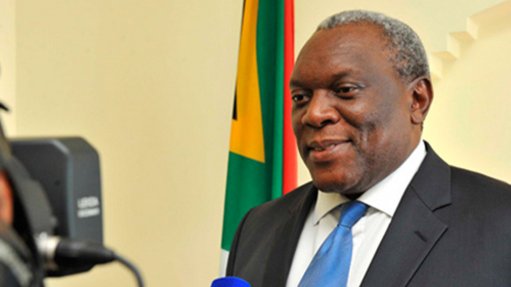
Telecommunications and Postal Services Minister Dr Siyabonga Cwele
The first phase of the ambitious South Africa (SA) Connect broadband strategy – the national broadband plan – will get under way at the start of the new financial year on April 1.
Speaking at the inaugural Wi-Fi Forum of South Africa conference, in Fourways, on Thursday, Telecommunications and Postal Services Minister Dr Siyabonga Cwele said that, within two to three years, 580 clinics, 4 000 schools, 180 police stations and 572 government offices would be connected to broadband.
This followed after President Jacob Zuma announced in his State of the Nation Address, in February, that broadband was one of nine focus points prioritised by government this year to kickstart the nation’s struggling economy.
Partially State-owned telecommunications giant Telkom was appointed as the ‘lead agency’ in the nation’s multibillion-rand broadband deployment, tasked with connecting offices in eight district municipalities, particularly in the rural regions, including Dr Kenneth Kaunda, in North West; Gert Sibande, in Mpumalanga; OR Tambo, in the Eastern Cape; Pixley ka Seme, in the Free State; Umgungundlovu and Umzinyathi, in KwaZulu-Natal; and Vhembe, in Limpopo.
Following public outcry over the manner in which Telkom was appointed to take the lead in the national project, Cwele on Thursday stated that Telkom had the capacity and capability to undertake such a large programme and could leverage the relevant State-owned enterprises and pull other companies into the fold and transfer knowledge and skills.
The telecommunications giant had about 147 000 km of terrestrial fibre across South Africa and more than 16 000 fibre distribution points, enabling more than 100 000 services. It further had a 55% population reach with its third-generation coverage; 2 428 base stations on air; around 1 300 long-term evolution sites and over 3 700 Wi-Fi access points.
“Access to the Internet remains the single most powerful equaliser in the country … to bridge the racial, equality and rural/urban divide,” Cwele said.
The Telecommunications and Postal Services Department would coordinate and support the roll-out of the services that would play a critical role in mitigating South Africa’s three key challenges of unemployment, inequality and poverty through the implementation of SA Connect.
The much-revised and long-awaited SA Connect aimed to fast-track South Africa’s broadband backbone and access infrastructure, particularly in rural and underserved areas, and meet the country’s vision of providing broadband for all by 2020.
However, Cwele ceded that there was “a lot of work” ahead to achieve the targets set out for 2020 and 2030.
The plan envisaged access by 50% of the population to universal average broadband speed of 5 Mb/s this year.
By 2020, the department envisaged 100% access at a minimum speed of 5 Mb/s, with about 50% of the population able to access speeds of up to 100 Mb/s.
By 2030, 100% of the population was expected to have access to a minimum speed of 10 Mb/s, while 80% was expected to access speeds of up to 100 Mb/s.